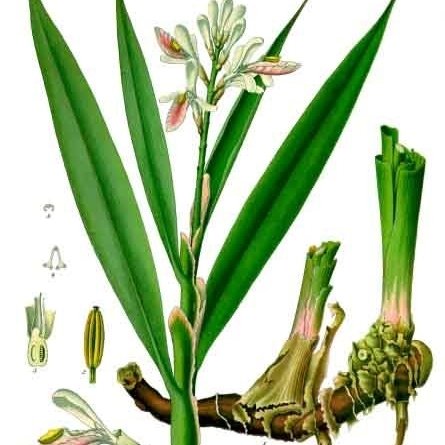A herb. The false stem 1-1.5 m tall. The rhizome is elongated. The leaves do not have stalks. The leaf blade in narrow and 20-30 cm long by 1.2-2.5 cm wide. The flower stalk is erect and 6-10 cm long. The flowers are borne singly. They are white with a red veined lip. The fruit is a capsule which is red and round. It is about 1 cm across.

